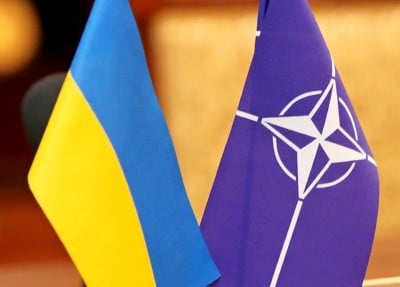The Deployment of NATO Combat Troops in Ukraine, “Arriving in Large Numbers”

All Global Research articles can be read in 51 languages by activating the Translate Website button below the author’s name (only available in desktop version).
To receive Global Research’s Daily Newsletter (selected articles), click here.
Click the share button above to email/forward this article to your friends and colleagues. Follow us on Instagram and Twitter and subscribe to our Telegram Channel. Feel free to repost and share widely Global Research articles.
Global Research Referral Drive: Our Readers Are Our Lifeline
***
In a disturbing and rather underreported development, NATO is starting to deploy combat troops to Ukraine, with British, French, Polish and other soldiers arriving in large numbers, writes Stephen Bryen (former staff director of the Near East Subcommittee of the Senate Foreign Relations Committee and former deputy undersecretary of defense for policy), noting that those are not mercenaries, but regular military “in uniform, home country proclaimed via insignia”, and mostly “concentrated in the western part of the country, although in some cases they are close to the actual fighting in the east.”
Bryen highlights that there are reports about some Ukrainian brigades refusing orders from their commanders including the 47th Mechanized Brigade, the 25th Airborne Assault Brigade,the 67th Mechanized Brigade, and others top Army brigades. Ukraine is basically losing the war, and that the US security establishment knows that. A Politico story reports that Washington is not convinced that Kyiv can possibly achieve military victory, even with the new $60 billion aid. US President John Biden is signing this bill into law to send a $60 billion military aid package to the Eastern European country so that it can get artillery shells and air defense systems.
Poland’s Defence Minister Wladyslaw Kosiniak-Kamysz claimed last week that Warsaw is ready to help Kyiv get military-age men back by sending back Ukrainian refugees. In this context, NATO (or European) troops could be one last desperate measure?
NATO’s Secretary General Jens Stoltenberg in fact admitted, in a very underreported statement, that “several NATO allies have men and women in uniform at the embassies” (in Ukraine), but claimed they are merely “giving advice.” Stoltenberg has also announced that NATO countries have air defense systems ready to be sent to the Slavic country. He emphasized NATO members have the “right” to “help” Ukraine, but this does not make the Atlantic Alliance itself a party to the conflict. As Bryen writes, if such military personnel “are firing at the Russians the only proper way to interpret their presence is that they are playing an active part in the shooting war.” Bryen notes that in Vietnam too, the US sent “advisors” who turned out to be US Special Forces engaging in combat.
As I wrote, former NATO Commander James Stavridis argued in November last year that the US should learn from “the lessons of South Korea” and negotiate a “land for peace conclusion to combat” in Ukraine. He argued that “much as South Korea was not in a position to demand a complete territorial victory over the north in the 1950s, Ukraine is not in a position to demand a complete Russian withdrawal from its territory”, which remains true to this day, and adds that “this will probably bog down into a frozen conflict.” Such a depressive outcome to Kyiv, which is a major defeat from the perspective of Washington’s geopolitical goals, still seems in any case to be the most realistic scenario. There is a catch, though. The retired admiral basically proposes to rebuild what is left of Ukraine and then maybe make it become an Atlantic Alliance member. One should keep in mind this is no fool, but rather a very well-accomplished diplomat, scholar, and statesman, being, among many other things, a chair emeritus of the US Naval Institute’s board of directors.
The massive arrival of NATO countries’ military personnel in Western Ukraine could thus be seen as the materialization of a de facto “partition” of Ukraine starting to gradually unfold. The main red flag here is the presence of these soldiers also in Eastern Ukraine, “near the actual fighting.” Belarusian President Alexander Lukashenko has voiced his concern about a high risk of military incidents on the Belarus-Ukraine border, and added that it would be “apocalypse” if Moscow retaliated against Western actions by employing nuclear weapons.
As I wrote last week, the West can play with words, in a Schrödinger’s cat manner (“advisors, not combatants” and “European troops, not NATO troops”) as much as it wants. In any case, NATO’s Article 5, which states that an “armed attack” (against a NATO member) “shall be considered an attack against them all”, is still binding. From a Western perspective, if NATO European states send troops to the combat zone in Ukraine and Russia retaliates by attacking them while Washington does nothing, this would render NATO pointless and permanently destroy the Atlantic Alliance credibility and raison d’être. If, on the other hand, the US and/or other European powers decide to escalate things and retaliate, then the “apocalypse” becomes a little closer. Those are not positive scenarios, either way.
*
Note to readers: Please click the share button above. Follow us on Instagram and Twitter and subscribe to our Telegram Channel. Feel free to repost and share widely Global Research articles.
This article was originally published on InfoBrics.
Uriel Araujo is a researcher with a focus on international and ethnic conflicts. He is a regular contributor to Global Research.

